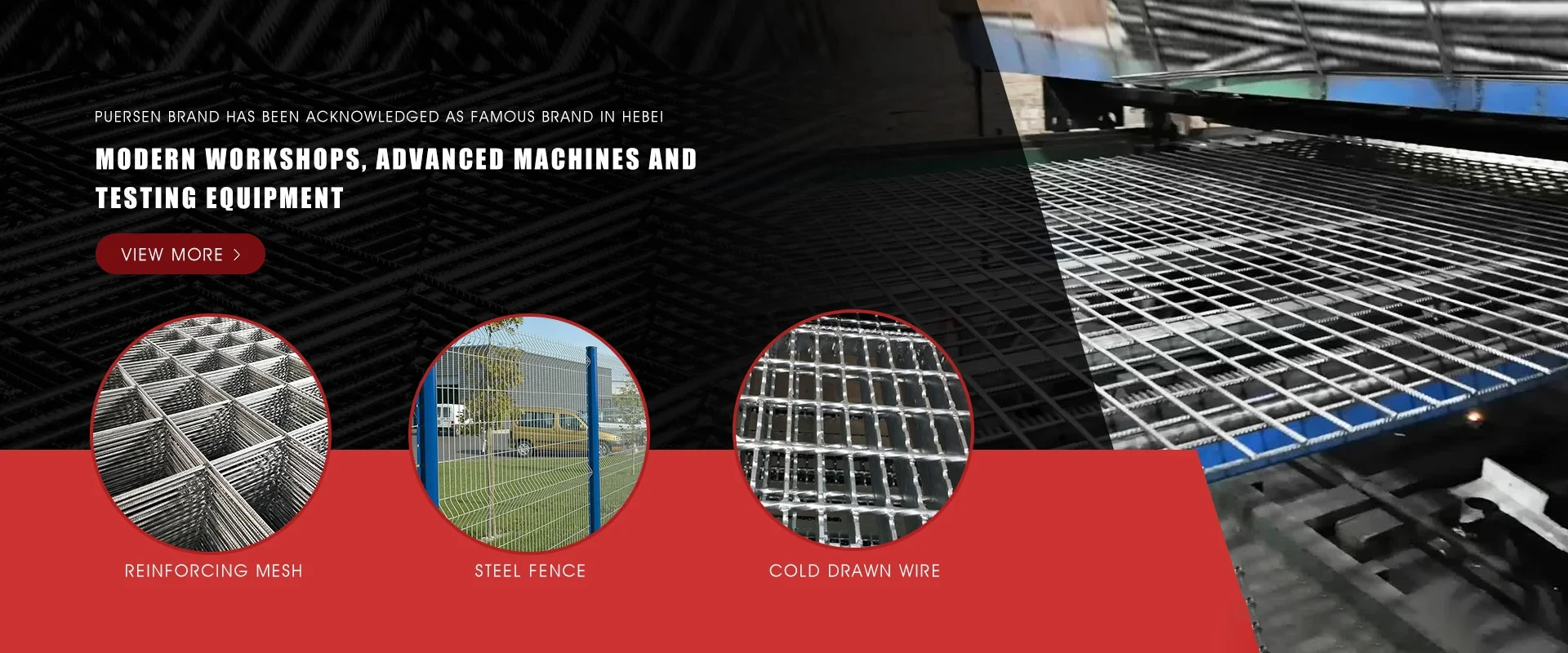Oct . 22, 2024 03:51 Back to list
Exploring the Benefits and Applications of Reinforcing Mesh in Construction Projects
Understanding Reinforcing Mesh Its Importance and Applications in Construction
Reinforcing mesh is an essential component in the construction industry, playing a critical role in strengthening concrete structures. Constructed from interwoven steel bars, this mesh provides enhanced tensile strength and structural integrity to various concrete applications. In this article, we will explore the significance, types, and various applications of reinforcing mesh in construction.
What is Reinforcing Mesh?
Reinforcing mesh, commonly known as welded wire mesh or rebar mesh, consists of a network of steel wires that are welded together at various points to form a grid-like structure. This mesh is typically made from high-quality carbon steel, which possesses excellent mechanical properties that enhance the overall performance of concrete. When embedded in concrete, reinforcing mesh helps to distribute loads more evenly, reduce cracking, and increase resistance to deformation under stress.
Importance of Reinforcing Mesh
Concrete is a durable material but has poor tensile strength, making it susceptible to cracking and failure under tension and load. By incorporating reinforcing mesh, construction professionals can significantly enhance the structural stability of concrete elements. The primary benefits of using reinforcing mesh include
1. Improved Load Distribution The mesh acts as a tensioning element that helps distribute loads throughout the concrete slab or surface, reducing the risk of localized failure.
2. Crack Control The incorporation of reinforcing mesh minimizes the formation and spread of cracks in concrete, ensuring the longevity and durability of the structure.
3. Increased Flexibility Reinforcing mesh increases the flexibility of concrete elements, allowing them to withstand dynamic loads and vibrations without compromising integrity.
Types of Reinforcing Mesh
Reinforcing mesh comes in various styles and configurations, each suited for different applications. The most common types include
reinforcing mesh

1. Welded Wire Mesh This type consists of steel wires arranged in a grid and welded at the intersections. It is commonly used in slab construction, pavements, and precast concrete products.
2. Reinforcing Bar (Rebar) Mesh Made from rebar that is placed in a mesh format, it offers robust strength and is often used in heavy-duty applications such as foundations and structural supports.
3. Fiberglass Reinforcement Mesh This alternative to steel mesh is designed for specialized applications, such as in areas with high corrosion risk, as fiberglass is resistant to chemical attacks.
Applications of Reinforcing Mesh
Reinforcing mesh is versatile and used across numerous construction scenarios, including
- Residential Foundations In residential buildings, reinforcing mesh is widely used in foundation slabs to ensure even load distribution and structural stability.
- Industrial Flooring Factory floors and warehouses utilize reinforcing mesh to support heavy machinery and equipment, while mitigating the risk of cracking from heavy loads.
- Roads and Pavements Reinforcing mesh is employed in road construction to enhance the durability of asphalt and concrete surfaces.
- Retaining Walls In retaining wall applications, reinforcing mesh helps stabilize the structure against lateral earth pressure, ensuring long-term functionality.
Conclusion
Reinforcing mesh is a vital component in the construction industry, providing essential support and stability to concrete structures. Its ability to distribute loads, control cracking, and increase flexibility makes it a preferred choice among builders and engineers. As construction technology continues to evolve, the use of reinforcing mesh will undoubtedly remain a crucial aspect of creating safe and durable structures. By understanding its importance and applications, construction professionals can improve the longevity and performance of their projects significantly.
-
Welded Wire Mesh for Industry: Factory Direct & Custom Solutions
NewsAug.21,2025
-
Welded Wire Mesh for Industry | Factory Direct & Durable Solutions
NewsAug.19,2025
-
Chain Link Fence-Anping County Puersen Hardware Wire Mesh Co., Ltd.|Durable Security&Versatile Applications
NewsAug.18,2025
-
Glass Food Storage Jar with Screw Wooden Lid - Anping County Puersen|Heat-Resistant & BPA Free
NewsAug.18,2025
-
Glass Food Storage Jar with Screw Wooden Lid - Anping County Puersen Hardware Wire Mesh Products Co., Ltd
NewsAug.18,2025
-
Glass Food Storage Jar with Screw Wooden Lid - Anping County Puersen Hardware Wire Mesh Products Co., Ltd|Eco-friendly Durable Storage
NewsAug.18,2025

